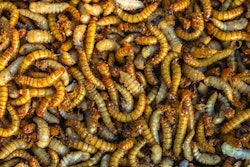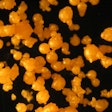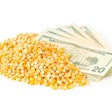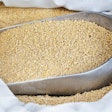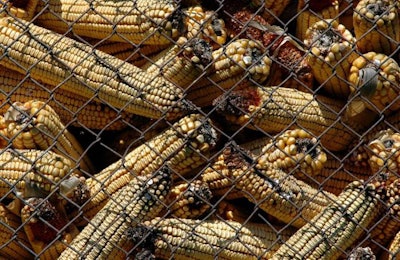
World Mycotoxin Survey finds all regions of the world affected by mycotoxins and co-occurrence is a problem on almost every continent
The prevalence of mycotoxin co-occurrence in crops around the world pose health risks to livestock and aquaculture, according to the World Mycotoxin Report from Biomin and Romer Labs.
In a webinar this week, Alexandro Marchioro, senior mycotoxin expert at Biomin, said all regions are affected by mycotoxins and that co-occurrence is a problem on nearly every continent.
Biomin’s 2019 World Mycotoxin Survey included 93,543 analyses from 21,287 samples from 86 countries.
In North America, mycotoxin risk is extreme, with last year’s flooding along the Mississippi, Illinois and Missouri rivers in the U.S. contributing to deoxynivalenol (DON) and fumonisin (FUM) risk in corn and soybean crops. In North American corn samples, for example, 85% were affected by DON, and 78% were affected by FUM. Seventy-five percent of samples showed a co-occurrence of more than one mycotoxin.
“The corn trends for this region show us that the fusarium mycotoxins are increasing their prevalence,” Marchioro said. “DON and FUM were the highest threats for this region. We know that these two toxins can work together to make things even worse for the animals.”
Meanwhile, in South America, 90% of corn samples were positive for FUM and 56% were positive for DON. Sixty-nine percent of the region’s cereal grains were affected by DON.
“North and South America are showing high risk for all animal species, especially regarding FUM and DON,” Marchioro said.
In Europe, mycotoxin contamination is varied across the region, according to Annelise Mueller, product manager-mycotoxins at Biomin.
European samples show a high to severe risk of mycotoxin contamination, with DON the most prevalent, followed by FUM. Eighty-three percent of corn samples in Europe were contaminated with DON, and 73% by FUM.
Mycotoxin contamination across Europe is varied, “especially due to different weather conditions and climate, and also the grains that are produced. While in Central and Eastern Europe, deoxynivalenol is the most prevalent mycotoxin, in Southern Europe it’s fumonisin,” Mueller said.
Asia has seen about the same high to extreme risk for mycotoxin contamination this year as last year. There was an increase in risk from FUM and zearalenone, while DON risk stayed the same as the previous year.
“This is a severe risk for swine, poultry and aquaculture industries,” she said.
In the Middle East, FUM was most prevalent, with 97% of finished feed samples testing positive, with average levels of contamination.
In sub-Saharan Africa, mycotoxin risk increased to extreme from the previous year, mainly from aflatoxins in corn and finished feed. The main risk in all of Africa is DON.
Risks of mycotoxin co-occurrence
Mycotoxin co-occurrence can have additive, synergistic or antagonistic effects on animals, according to Martina Bellasio, senior mycotoxin expert at Romer Labs. This means that, together, the risk to animals could be higher when more than one mycotoxin is present at the same time.
Additive effects mean “the toxic effects of two mycotoxins nearly equal the sum of their individual effects,” she said.
Synergistic effects mean “the effects of two or more mycotoxins present in the same sample will be higher than the sum of the effects of the individual mycotoxin.”
Antagonistic effects are when the combination of the two mycotoxins have an overall effect that is less than the sum of the individual effects.
Because risks of mycotoxin co-occurrence affect all species, Bellasio recommended multi-mycotoxin analysis and the use of feed additives that control mycotoxin effects.


